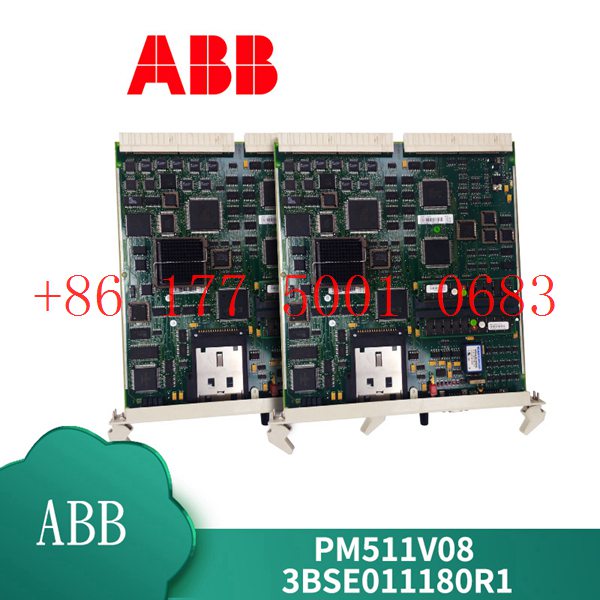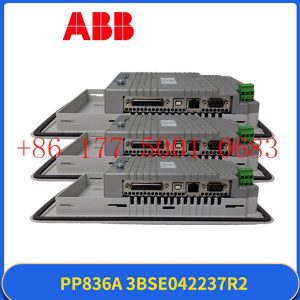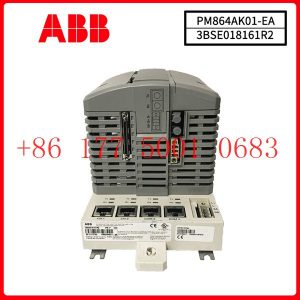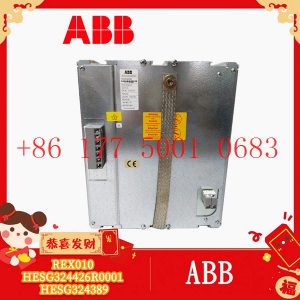Description
hardware flow control. It is an ideal choice in the field of industrial automation.
Design of ABB industrial robot deburring and grinding workstation based on RobotStudio simulation software
introduction
As an official offline programming software for ABB robots, Robotstudio not only has powerful simulation and offline programming functions, but also has automatic path generation
function and simulation monitoring collision function. It can realize the simulation of robots in real scenes, so as to timely update existing robot programs. optimize. On-site teaching
programming will affect normal production activities on site.
The application of Robotstudio software offline programming can reduce on-site teaching and programming time.
As a traditional process of mechanical processing, deburring and grinding have a wide range of applications. However, for a long time, in the process of manual deburring
and polishing, there have been differences in operations between workers. The manual operation is not repeatable and the deburring effect is unstable, which has seriously
affected the surface quality and service life of the finished product; and the working environment There is a large amount of dust floating in the air and the conditions are harsh,
seriously endangering the physical and mental health of workers. With the proposal of “Made in China 2025”, intelligent manufacturing production has become an
important development direction for the transformation and upgrading of the future manufacturing industry. The use of industrial robot automated production lines for repetitive
batch processing operations can not only greatly improve production efficiency, but also greatly improve product quality. Yield and production stability. Therefore, before designing
the robot polishing program, if the shape, size and polishing amount of the workpiece to be polished are known, the robot offline program can be written on the
Robotstudio software according to the existing conditions, thereby improving the efficiency of on-site programming.
1Design task description
This task is to create a new simulation workstation in ABB robot simulation software Robotstudio. The corresponding training equipment in reality is the Yalong
YL-l360A industrial robot deburring and grinding system control and application equipment. The industrial robot selection and method of the simulation workstation are
The grinding head installed on the blue plate refers to the Yalong YL-l360A industrial robot deburring and grinding system control and application equipment, and the
workpiece is customized. The ABB industrial robot deburring and
grinding workstation simulation training process includes: creating a workstation, setting up tools, creating smart components, creating tool coordinate systems,
creating trajectories, programming, simulation design, and verification.
2 Task implementation
2.1 Create a workstation
Import the robot: First, create a new simulation workstation in the Robotstudio software. The workstation name is self-named, and then import the
corresponding industrial robot IRB1410. The robot position remains unchanged by default. Create a robot system, modify the system options, check 709-1D
eviceNetMaster/s1ave, select Chinese as the language, and leave the other options unchanged by default, then click Confirm to create the robot system
After the robot system is created, hide the industrial robot IRB1410 to facilitate subsequent workstation operations.
Import workpiece: The workpiece here is customized, and the corresponding workpiece is selected according to the actual situation on site. This article
uses the original workpiece Curvet in Robotstudio software. After importing it into the workstation, according to the reachable range of the robot, just place the
workpiece at a suitable location within the reachable range of the robot, as shown in Figure 1.
Import the grinding rotor tool: First, create a new grinding rotor tool component – rotor – copy (2) and rotor – copy (2) in the so1idworks 3D software. The
rotor – copy (2) is a rotatable grinding rotor. —The copy is the tool body, which is the grinding rotor frame, and is installed on the robot flange, as shown in Figure 2.
2.2 Setting tools
First, move the rotatable grinding rotor and the tool body to the local origin based on point A, and adjust the initial tool angle so that the grinding rotor is
parallel to the x-axis of the geodetic coordinate system, as shown in Figure 3. Set the local origin of the tool body at this time, change the position x, y,: to 0, 0, 0, and change the direction x, y,: to 0, 0, 0.
Figure 3 Tool settings
Create a new frame at point B of the tool body, name it “frame l”, and adjust the direction of frame l so that the axis is perpendicular to the
plane of point B. The specific direction is shown in Figure 4.
https://www.xmamazon.com
https://www.xmamazon.com
https://www.plcdcs.com/
www.module-plc.com/
https://www.ymgk.com
RELIANCE 805427-1S Resistance scaling module
RELIANCE 805405-5R Field power module
RELIANCE 805405-3R SF3000 Single-Phase Field Power Module
RELIANCE 805405-1R Power Module
RELIANCE 805403-3R field power module
RELIANCE 805403-2R Resistor Scaling Module
RELIANCE 805403-1R Resistor Scaling Module
RELIANCE 805402-R Automax Distributed Power System
RELIANCE 805401-S 3-Slot PMI Rack assembly
LAM Research 605-109114-004 GE V7668A-132L00W04 4-Port Gigabit Ethernet Card Module
RELIANCE 805401-7R 4-Slot Parallel Gate Amplifier Rack
RELIANCE 805401-3S AutoMax Distribution Power System
RELIANCE 805401-2S Power Module
RELIANCE 804100-RX Remote I/O Head module
RELIANCE 804100-RV complete module
RELIANCE 61C613 analog input module
RELIANCE 61C605 8-Channel Isolated Thermocouple Module
RELIANCE 61C544 RTD module
RELIANCE 61C542 16 Channel Input Module
RELIANCE 61C516 AC/DC Input Module
LAM Research 605-048878-001 GE FANUC VME-7671-421000 SBC Board
RELIANCE 61C540 16-Point Input Module
RELIANCE 61C515 16-Bit Input Module
RELIANCE 61C501 Input Module
RELIANCE 61C500 module
RELIANCE 61C366 Analog Output Module
RELIANCE 61C351Input module simulates track card
RELIANCE 61C365 Output Module
RELIANCE 61C351 Input Module Analog Rail Card
RELIANCE 61C350 I/O Module
RELIANCE 61C345 Analog Input Module
RELIANCE 61C346 Analog Rail created
RELIANCE 61C326 PLC interface module
RELIANCE 61C23 AutoMax Local I/O headers created by the DCS system
RELIANCE 61C22 Local I/O Head made
RELIANCE 58820 AutoMax DCS system designed by MBCN
RELIANCE 57C570 AutoMax PC3000 Processor
RELIANCE 57C565 Optional string andante
RELIANCE 57C560 PC3000 processor
RELIANCE 57C554 Remote I/O Shark Interface Module
RELIANCE 57C494 Power Supply Module
RELIANCE 57C493 Automax Power Supply
RELIANCE 57C491 Supply module
RELIANCE 57C463 Frequency Event Counter Module
RELIANCE 57C446 PLC Module
RELIANCE 57C445 PC link interface
RELIANCE 57C443 Remote I/O scanning module
RELIANCE 57C442 Interface Module
RELIANCE 57C441 created Modbus Plus Module
RELIANCE 57C440 Ethernet Communication Module
RELIANCE 57C439 7010 Automax processor
RELIANCE 57C435A AutoMax Processor Module
RELIANCE 57C435 7010 Processor Module
RELIANCE Processor Module 57C431







Reviews
There are no reviews yet.